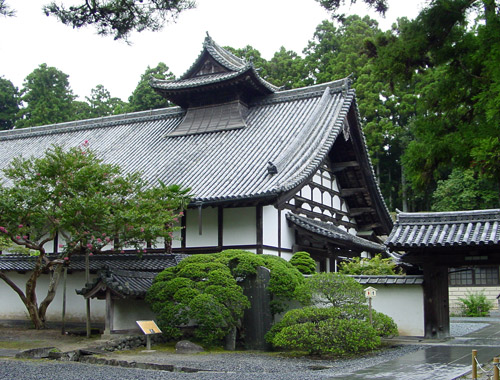|
||
 |
||

Zuiganji Kuri 瑞巌寺庫裡 (Miyagi)
2 By the Edo period, kuri was the most widely used term for the monks' lodging in a temple, regardless of sect. Typically it was directly linked to the main hall of the temple or subtemple. Generally, it was a suite of raised-floor living rooms, kyoshitsubu 居室部, and had an earthen floored entry and service area *doma 土間. Surviving examples have many features in common with traditional vernacular houses *minka 民家, of the same period. In the Edo period, kuri were built with their own formal guest reception suites, shoin zashiki 書院座敷. Since many examples have their main entry in the gable end *tsumairi 妻入, the gable facade is often their most distinctive feature, with an elaborate frame incorporating decorative elements such as bracket complexes *tokyou 斗きょう, rainbow beams *kouryou 虹梁, and 'shrimp' rainbow beams *ebikouryou 海老虹梁.
(C)2001 Japanese Architecture and Art Net Users System. No reproduction or republication without written permission.
掲載のテキスト・写真・イラストなど、全てのコンテンツの無断複製・転載を禁じます。

